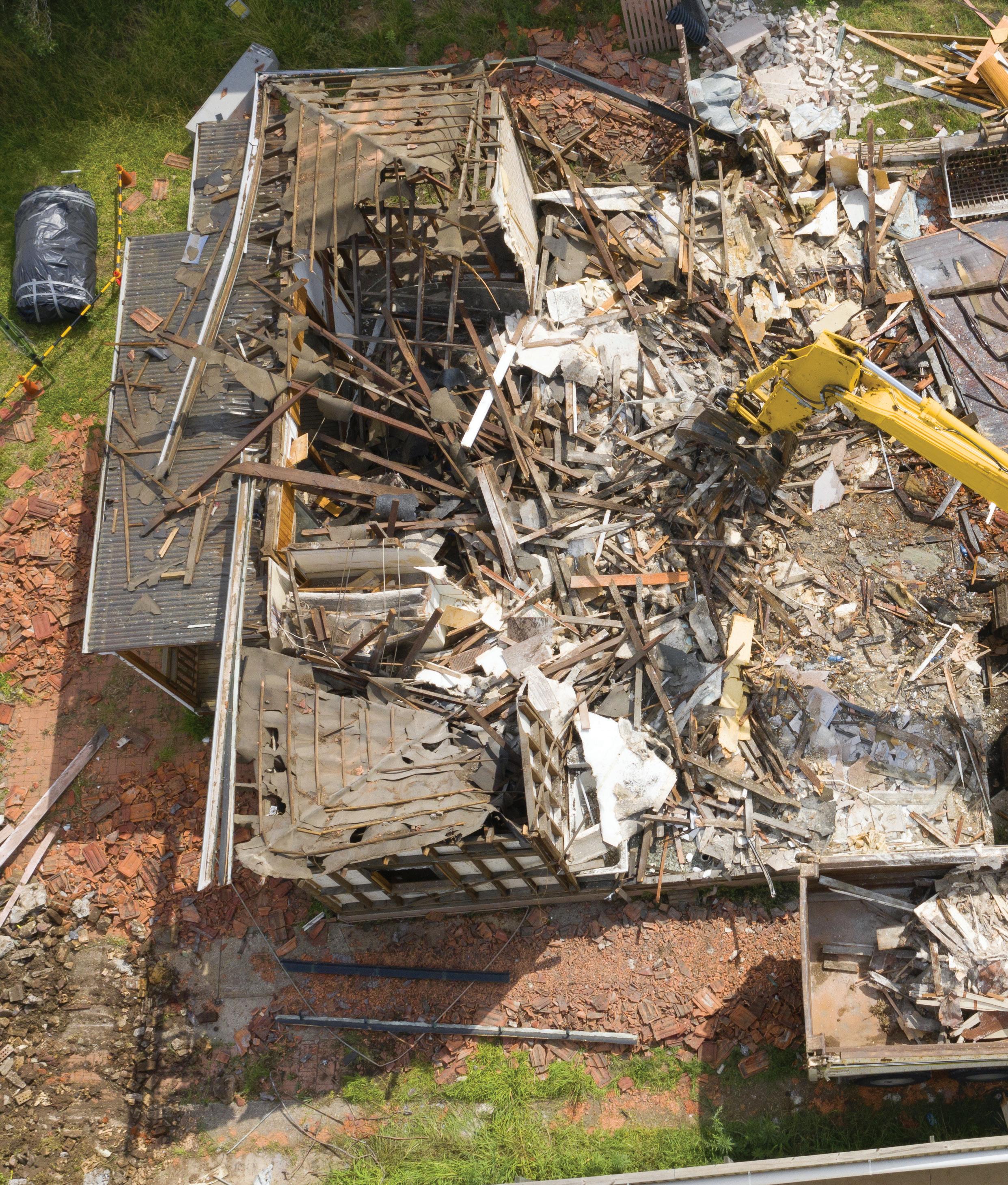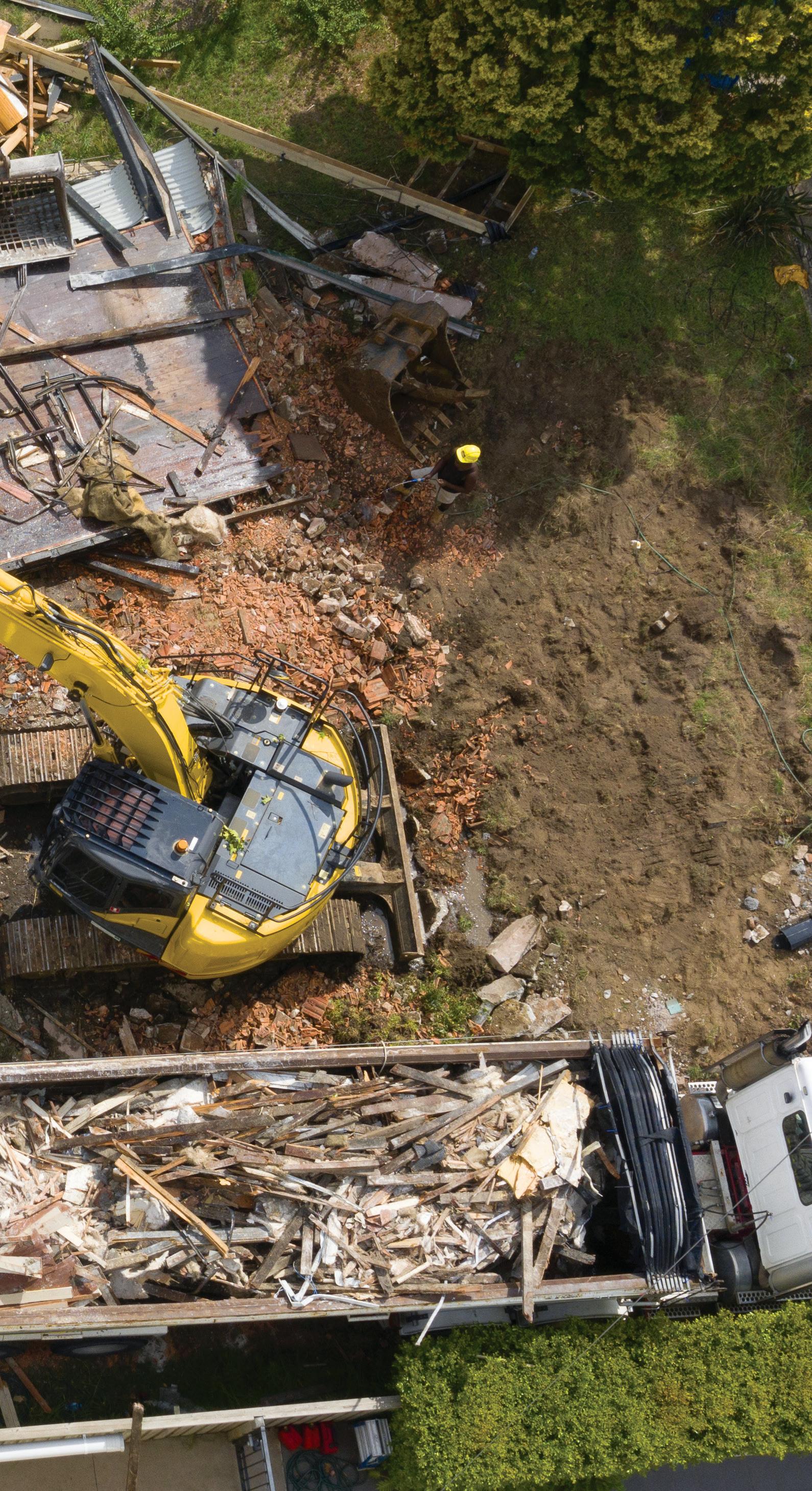
4 minute read
Right the Blight
RIGHT THE
amilton is a very different City than it was 10 years ago. Someone who drives through the City today will be greeted with a different sight than what they would have seen in 2012. Economic Development, art, and a citywide sense of pride have revitalized the image of Hamilton. Though major strides have been made, there are still miles to go.
The City recently did a survey to understand just how prominent of a problem blight was to citizens. In the survey over 95 percent cited blight as a problem in our town, with 75 percent of respondents saying that blight is impacting property values. Nearly 40 percent of homeowners have said that blight is a big enough issue in their neighborhood that they’ve considered moving. This survey saw a response from the City to take a new strategy towards eliminating blight.
“It’s interesting, a lot of people have different views of what blight is,” said Aaron Hufford, chief of staff for the City. “It depends on what block you live on or what neighborhood you live in. We spent some time a couple of years ago thinking through all the issues of blight and what it means to people.”
Blight comes in many forms but some of the most prominent ways are unkempt yards, abandoned structures, failing streets, illicit/illegal activities, and much more. So the City looked internally at what it can do to better the City’s fight against blight.
Of the biggest changes was the simple switch of code compliance to

Vacant Property Legislation
Chronic and long-term vacant
properties have a negative impact on neighborhoods. They often have maintenance issues and occasionally attract vagrancy, illicit activities, and structure fires. These issues reduce the values and also the quality of life for those who own property and/or live nearby. The City of Hamilton is actively working to minimize the number of vacant properties by working with owners to reactivate them. This starts with a requirement to register the properties, giving the City reliable contact information for the owner in order to take steps toward improving Hamilton neighborhoods.
Butler County Land Bank
The Butler County Land
Reutilization Corporation (Land Bank) is an important tool the City of Hamilton utilizes to help fight blight and improve our neighborhoods. Through the Butler County Land Bank, the City has gained access to funding to demolish and reclaim vacant and abandoned residential properties in targeted areas. As a result of these efforts, the City’s costs associated with safety calls and structure fires at vacant residential properties has decreased. In late 2021, the State announced an additional grant program that the Land Bank expects to utilize for additional blight removal and revitalization efforts.
The empty residential lots
that remain after demolition are potentially available to an adjacent property owner as an extension of their yard through the City’s Side Lot Program. The City has also partnered with non-profits to reactivate some of these vacant lots. For more information please visit: www.hamilton-oh.gov/landbank
fall under the umbrella of the Resident Services Department rather than the Health Department. One big reason for that switch was the Health Department’s focus on the COVID pandemic.
“It sounds really small but it’s been a significant change,” said Hufford. “Our quick strike team goes out and picks up trash and things that people don’t want to touch. This quick strike team goes out and takes care of all code compliance in our neighborhoods as well.”
As for the neighborhoods themselves, they’ve benefited greatly from the Department of Neighborhoods.
“They’ve been fantastic in terms of eliminating blight in our neighborhoods,” said Hufford. “They’re engaging with each distinct area, getting the pulse and addressing the issues that face the residents.”
Among the responsibilities of the Department of Neighborhoods is quality control, to make sure that the issues are responded to in a timely manner.
The City Manager’s Office recently committed itself to undertaking a citywide property inventory.
“This was a big initiative for us,” said Hufford. “We partnered with the Western Reserve Land Conservancy. We walked every single street in Hamilton and snapped a photo of every parcel and graded it on an ‘A’ to ‘F’.”
This allowed the City to pinpoint problem areas with several properties in the D and F range. That report just finished in the fall, and the intention is that data is going to help the City make strides in fighting blight amongst our City’s more dissipated properties. Already the City has seen improvements through compliance which has made the efforts worthwhile.
“We are often addressing things on a complaint basis, this audit gave us a more proactive approach,” he said.
Through the audit, the interdepartmental team found 500 properties graded D and F. The goal of the City is to remove or improve all of those in the next three years.
“This is a pretty bold and ambitious endeavor,” said Hufford. “But we’re making great progress already this year, and I think in the next three years it’s going to look totally different.”
Other strategies have been deployed by the Police Department and the Fire Department regarding chronic nuisance complaints and vacant properties. All of which are apart a grander effort to cut down on blight in our City of Hamilton. ❑











